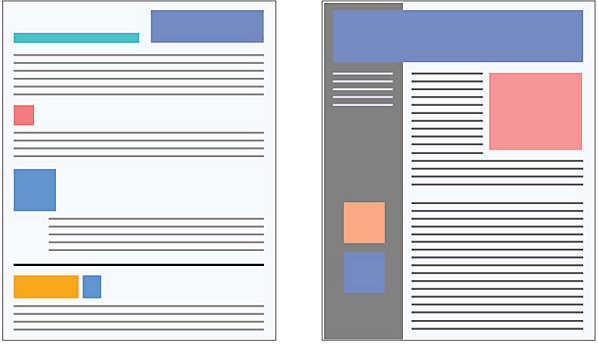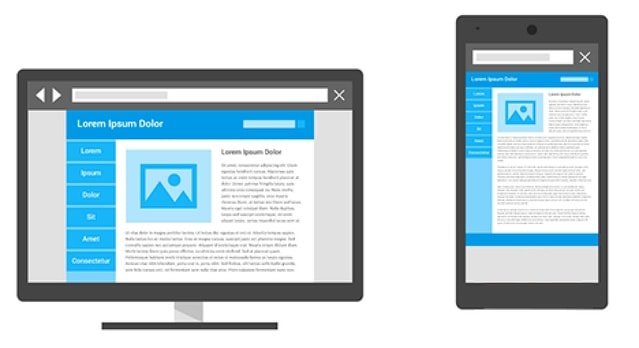When building a website, it is important to build it with Search Engine Optimization (SEO) in mind. By doing this from the start of your planning, it will help you to ensure less work needs to be done in the future. Sometimes web designers considers themselves to be proficient in SEO or consider them as SEO experts, but still miss certain areas in the design process. As a business owner, it is important to keep every step of web design process in mind. Using SEO techniques are no longer an option in today’s digital world. These strategies are a necessity to gain success.
The first step in building a website with SEO in mind is understanding what SEO is and how it will be beneficial to a business website. SEO is important in helping a website to gain more visitors. A higher score means a website will be higher up on the list. The higher a website is on the list, the more visitors it is likely to get. With the opportunity to get more visitors, there is also more of a chance these visitors will turn into customers and make purchases.
PAGE LAYOUT AND FORMATTING
A page layout is a pattern (or framework) that defines a page’s structure. it has the role of structuring the data present on a website each for the website’s owner and for users. It provides clear ways for navigation among sites and puts the most necessary parts of a web site front and center.


The layout of your page is very important. The layout can be anywhere from the size of the text to where you put content, links, and pictures.
- A website that has too little or too big font will not make users happy. It is important to use an average size font and also consider what color both the text and background are.
- Using a background and font color that is difficult to read will also discourage users from interacting with your content. It means they could miss important information or might leave the website altogether.
- Consider that placing content in some of the most looked at spots can ensure visitors are getting the most important information that might convince them to take action. Tools can help you to determine what parts of your website are most clicked on and paid attention to by a user.
- Your URL should also be changed to a worded structure; Example, www.Google.com, instead of www.Google.com/?page_id=32.
- Don’t put text in images because search engines cannot read what’s inside them.
- Direct your site to either www or the non-version, not both.
- Pay attention to speed. Having large images, too many CSS files and HTTP requests can slow things down. Javascript can also confuse search engines, so unless it’s absolutely necessary, don’t use it.
TAKE TIME TO CONSIDER AND PLAN SITE STRUCTURE
The planning of your web site layout is simply as necessary as the content. Keywords, and title tags. Before any coding is completed, it’s necessary that the most features of the web site are arranged out. You’ll be able to either try this by drawing it out on paper or using a web tool designed for this purpose. The structure of your web site is important to user experience.
By taking the time to set up each button, link, and piece of content which will be occurring every page, you’ll be able to guarantee there are fewer mistakes once it comes to building a website. It’s almost like having a blueprint for building a house. You can’t simply jump in and begin the building method without an idea. By taking the time from the start to set up everything out, you’re already on your way to obtaining a better SEO ranking.
NAVIGATION AND USER EXPERIENCE
Navigation will extremely have an effect on user experience. If it is tough to go from one place on a web site to a different, a user might leave before they get the chance to convert. Anytime a website is frustrating, and it creates a negative user experience. This may be prejudicial as to whether or not a visitor converts to a customer, which might have an effect on SEO ranking and how your business is performing overall.

There are several tools which will help guarantee users have an honest experience and that they are able to navigate to different places on the site. By having the web site tested either by a tool or real users, they will help to search out out if there are any errors or bad links. If there are, it may be fixed so that a user will have a much better experience. It will even be helpful to check the web site a couple of times before launching it live.
Title Tag & Image Optimization
First of all, you need to grasp what a title tag is. Title tags are the heading or title for every page that’s usually displayed by the search engine on the results page. it’s essentially the first words regarding the page a user sees once looking for a specific topic.
If the keywords getting used don’t seem to be relevant to what the user is searching for, they’re going to probably pass over your page to go elsewhere. Having the title tag for each of the pages on a web site use relevant keywords can help with SEO. This can be one thing you’ll be able to concentrate on when building your web site. When search engines are determining the score of a webpage, they’re going to take the title tag into consideration based on the keywords used.
Optimize the website for mobile

Today, many people use their smartphone as their sole computer. There are 3 billion people with smartphones, and 1.3 billion who own computers.
Having a mobile-friendly web site has become crucial for SEO ranking. Google needs to serve its clients on each device, and will consequently penalize websites that don’t seem to be mobile-responsive. Since your customers have become a lot of mobiles, your web site ought to follow and continue with this trend.

Websites that aren’t mobile-optimized typically have longer load times and smaller text. Causes of slow-loading content relate to pictures displayed on the site not being optimized and code that has to be cleaned up. This frustrates customers and causes them to leave your web site quicker.
Optimizing your website and holding on to those visitors will improve your website ranking on search engines and increase client satisfaction.
Speed up the pages
In 2006, Amazon reported that for every 100 milliseconds, they speed up their website, they see a 1% increase in revenue.

First of all, how fast is fast enough? Optimising your page speed can be a hedonic process, kind of like running on a treadmill. There will forever be room for improvement, so when should we be satisfied?
Below 1 second = perfect
1-3 seconds = above average
3-7 seconds = average
7+ seconds = very poor
1-3 seconds = above average
3-7 seconds = average
7+ seconds = very poor
These benchmarks are based on studies showing that 47% of people expect a web page to load in under two seconds, and 57% of visitors will abandon a page that takes 3 or more seconds to load.
Let’s start off with some of the things that have the biggest impact.
- Fix all broken links
- Compress your images
- Use a good theme (if using WordPress)
- Add Expires headers to leverage browser caching
- Reducing Your redirects
- Minify your CSS and JS files
- Specify image dimensions
As, now, you have learnt all the things necessary to create an SEO optimized website, the very next step is to understand the implementation of these concepts practically. For this, you can join a Digital Marketing training company in your city or go for online SEO training courses to learn about all these concepts of SEO and Digital Marketing.
